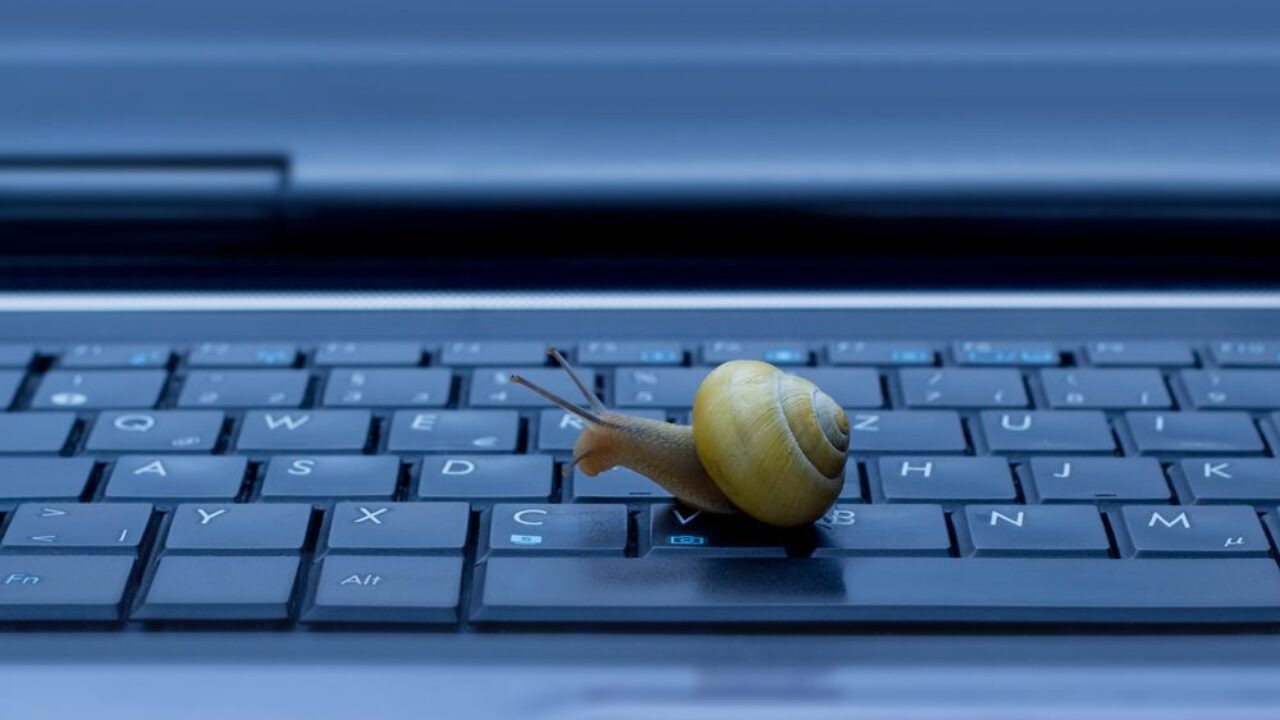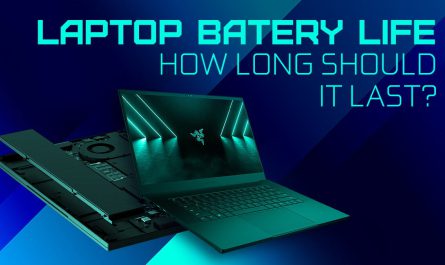If your laptop feels like it’s wading through molasses every time you try to open a program or even just turn it on, I get it. It’s super frustrating. You want to get stuff done, but instead, you’re stuck watching that little spinning wheel, wondering why on earth your machine is suddenly so sluggish. The good news? You’re not alone, and this is fixable.
We’ll walk through why your laptop might be dragging its feet, how to figure out if it’s hardware or software causing the hiccup, and what you can do to get it zipping again—all without risking your precious files. Think of this like a friendly troubleshooting chat, no tech jargon headaches here.
What Are the Common Reasons for a Laptop Running Slow?
Before we dive into solutions, let’s pinpoint what usually causes a laptop to crawl. Sometimes it’s one thing, other times it’s a messy combo.
1. Too Many Programs Running at Startup
You know when you turn on your laptop and it feels like it’s taking ages to even show the desktop? That’s often because several programs are launching right away. Some apps love to set themselves up to start automatically, even if you don’t need them every time.
2. Insufficient RAM (Memory)
RAM is your laptop’s short-term memory. When you have too little, your computer struggles to keep multiple apps running smoothly. Ever had to close tabs on your browser to make your laptop less sluggish? That’s RAM at play.
3. Old or Failing Hard Drive
If your laptop uses a traditional hard disk drive (HDD), it might be slower than solid-state drives (SSD). Plus, over time, HDDs can develop bad sectors or start failing, which drags everything down.
4. Malware or Viruses
Sometimes, sneaky software running in the background (malware) can hog resources, making your laptop slow without you realizing it.
5. Too Many Temporary Files and Junk Data
Over weeks and months, your laptop collects temporary files, cache, and other junk that can clutter the hard drive and slow things down.
6. Outdated Operating System or Drivers
Running an old version of Windows or macOS, or having outdated drivers, can also cause performance issues.
7. Overheating and Dust Buildup
If your laptop overheats, it might throttle performance to avoid damage. Dust inside vents and fans can block airflow, making this worse.
How Can I Check If My Laptop’s Hardware Is Causing the Slowdown?
So, how do you figure out if your laptop is slow because of hardware problems? Don’t worry, you don’t need to be a tech whiz.
Step 1: Check Your RAM and Hard Drive Usage
On Windows, open Task Manager by pressing Ctrl + Shift + Esc. On a Mac, use Activity Monitor (you can find it via Spotlight Search).
Look for:
- Memory Usage: Is it near 100%? That means your RAM is maxed out.
- Disk Usage: Is the hard drive running at 100% for long stretches? That’s a red flag.
If your disk usage is constantly high, your hard drive could be the bottleneck.
Step 2: Run a Hard Drive Health Check
For Windows laptops, you can run the built-in CHKDSK tool:
- Open Command Prompt as administrator.
- Type
chkdsk /f /rand press Enter. - It may say it needs to schedule the check on restart; agree and reboot.
This checks for bad sectors and attempts to fix them. It can be a slow process but worth it.
On a Mac, use Disk Utility:
- Open Disk Utility.
- Select your drive and click First Aid.
If errors are found, the tool will attempt to fix them.
Step 3: Look for Overheating Issues
Feel your laptop’s bottom or vents. Is it hotter than usual? Or is the fan running loud and constantly? Overheating can cause your CPU to throttle its speed to keep safe, slowing everything down.
If you’re comfortable, you can download free tools like HWMonitor (Windows) or iStat Menus (Mac) to check temperature sensors.
Step 4: Perform a Memory Test
Windows has a tool called Windows Memory Diagnostic:
- Type “Windows Memory Diagnostic” into the Start menu.
- Choose “Restart now and check for problems.”
It will reboot your laptop and test your RAM for errors.
What Software Issues Could Be Affecting My Laptop’s Speed?
If your hardware seems okay, the problem might be software-related. Here’s where most beginners get stuck because software issues aren’t always visible.
1. Too Many Background Programs
Like I mentioned earlier, programs running in the background gobble up resources. Your antivirus, chat apps, cloud backup tools—they can pile up without you noticing.
2. Outdated or Corrupted Operating System
Sometimes, updates don’t install correctly or your OS gets corrupted. This can slow down the entire machine.
3. Bloatware and Unnecessary Programs
Laptops often come packed with unnecessary trial software or manufacturer apps you never asked for. They consume space and slow things down.
4. Malware and Spyware
A virus or malware can seriously bog down your laptop by using CPU power and network resources without your knowledge.
5. Fragmented Hard Drive (HDD only)
On older traditional hard drives, files can become fragmented, meaning data is scattered in parts all over the disk. This makes your laptop work harder to open files.
6. Excessive Browser Extensions and Tabs
If your browser is slow, it might be from too many extensions or just tons of tabs open at once.
How Do I Safely Clean Up and Optimize My Laptop for Better Performance?
Ready to roll up your sleeves? Here’s a step-by-step guide to help your laptop run faster again, without risking your files.
Step 1: Back Up Your Data
Before any cleanup, back up your important files. Use an external hard drive, USB stick, or cloud services like Google Drive or Dropbox. You never want to lose photos, documents, or work because of a cleanup gone wrong.
Step 2: Manage Startup Programs
On Windows:
- Open Task Manager (Ctrl + Shift + Esc).
- Click the Startup tab.
- Disable programs you don’t need to launch automatically.
On Mac:
- Go to System Preferences > Users & Groups > Login Items.
- Remove unnecessary apps.
Step 3: Uninstall Unused Programs
Go through your installed programs list and uninstall anything you don’t use.
- On Windows: Control Panel > Programs and Features.
- On Mac: Drag apps from the Applications folder to Trash.
Step 4: Run Disk Cleanup or Free Up Space
Windows has Disk Cleanup:
- Search for “Disk Cleanup” and run it.
- Select drive C: and let it scan.
- Check the boxes for temporary files, cached files, and system junk.
- Click Clean up system files.
On Mac, use Storage Management (Apple Menu > About This Mac > Storage > Manage). It helps highlight large files and apps.
Step 5: Scan for Malware
Run your antivirus or use free tools such as:
- Windows Defender (built-in on Windows 10/11).
- Malwarebytes (free version available).
Remove any threats found.
Step 6: Update Your Operating System and Drivers
Make sure your system is up to date:
- Windows: Settings > Update & Security > Windows Update.
- Mac: Apple Menu > System Preferences > Software Update.
Also, update drivers via the manufacturer’s website if needed.
Step 7: Defragment Your Hard Drive (HDD only)
If your laptop uses an HDD (not SSD), defragmenting helps:
- Search for “Defragment and Optimize Drives.”
- Select your drive and click Optimize.
Note: SSDs don’t need defragmentation and it can reduce their lifespan.
Step 8: Clean Your Laptop Physically
Dust inside vents restricts airflow causing overheating. Use compressed air to blow dust from vents and fans. Just make sure the laptop is off and unplugged.
Step 9: Consider Upgrading Hardware
If your laptop is several years old, upgrading the hard drive to an SSD or adding more RAM can make a huge difference. It’s often cheaper than replacing the whole laptop and significantly speeds things up.
FAQ: Quick Answers to Common Slow Laptop Questions
| Question | Answer |
|---|---|
| Why does my laptop start slow? | Too many startup programs or outdated software. |
| How do I know if the hard drive is failing? | Frequent errors, slow file access, or disk check warnings. |
| Can malware really slow my laptop? | Yes, it can use CPU and network resources invisibly. |
| Should I defrag my SSD? | No, defragmentation is not needed for SSDs. |
| Is adding RAM worth it? | Usually yes, if you run many apps simultaneously. |
So, next time your laptop feels like it’s stuck in quicksand, don’t panic. You now have a roadmap to figure out what’s going on and fix it step-by-step. Remember, simple software tweaks and cleanups can make a world of difference, and sometimes it’s just the hardware needing a little upgrade.
You’ve got this!
References
[1] According to Microsoft Support, high disk usage can significantly slow down your laptop’s performance. https://support.microsoft.com/en-us/windows/fix-high-disk-usage-in-windows-10-4d8bc2b8-21d3-c975-7727-6c2fcd7dbedb
[2] Apple Support recommends using Disk Utility to repair disk errors on Mac devices. https://support.apple.com/en-us/HT210898
[3] The National Cyber Security Centre notes that malware can cause reduced performance by running hidden processes. https://www.ncsc.gov.uk/guidance/understanding-malware
[4] PCMag highlights common reasons for a slow laptop including overloaded startup items and insufficient RAM. https://www.pcmag.com/how-to/why-is-my-computer-so-slow
[5] According to Crucial, upgrading to an SSD is one of the best ways to speed up an older laptop. https://www.crucial.com/articles/about-memory/why-install-an-ssd
If you want me to help you with specific steps or tools, just ask!



